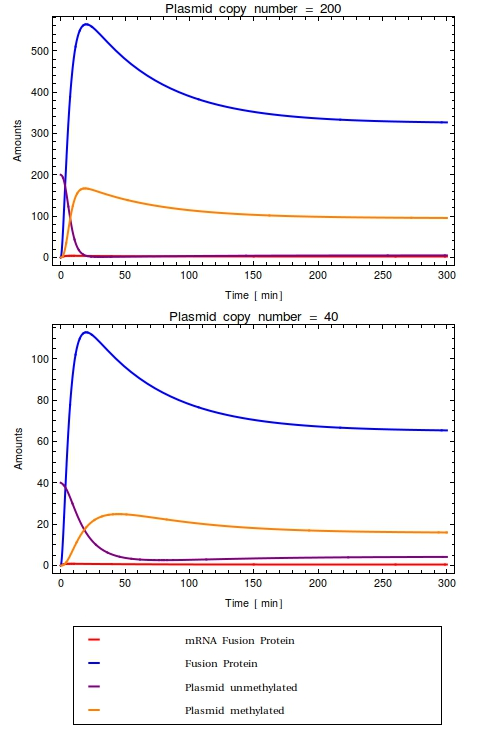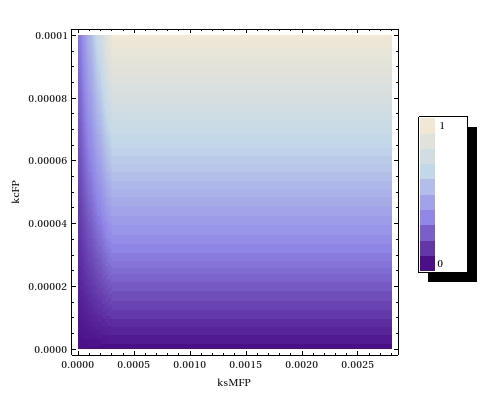Team:Amsterdam/achievements/stochastic model
From 2012.igem.org
(Difference between revisions)
(→Identifying acceptable leakiness rates) |
(→Leaky expression rate) |
||
| Line 17: | Line 17: | ||
== Leaky expression rate == | == Leaky expression rate == | ||
There are discrepancies between the definitions used in the literature on what leaky expression exactly is: | There are discrepancies between the definitions used in the literature on what leaky expression exactly is: | ||
| - | * The most favoured definition seems to be the that leaky operons show low expression rates even when bound by a negative transcriptional regulator (REF). | + | * The most favoured definition seems to be the that leaky operons show low expression rates even when bound by a negative transcriptional regulator (REF). In this perspective the transcriptional regulator is regarded to be unable to completely silence gene expression. In this case the only way to get a value for leaky expression is to measure it experimentally. |
| - | + | ||
| - | In this case the only way to get a value for leaky expression is to measure it experimentally. | + | |
In this process, care should be taken to be specific about what version of the operon exactly is being used. | In this process, care should be taken to be specific about what version of the operon exactly is being used. | ||
Some repressors are known to regulate transcription by binding to DNA regions that are very distant from the controlled operon. | Some repressors are known to regulate transcription by binding to DNA regions that are very distant from the controlled operon. | ||
| - | + | 'Plasmid versions' of these operons might not contain these distantly located binding sites and are therefore less likely to be optimally repressed. | |
| - | * Another definition is that the TF ''can'' fully silence gene expression and leaky expression | + | * Another definition is that the TF ''can'' fully silence gene expression and that leaky expression in fact is caused by seldomly occurring dissociation events between between TF and the DNA operator sequence. |
| - | During these short time windows of opportunity, the RNA polymerases | + | During these short time windows of opportunity, the RNA polymerases would then be able to quickly transcribe a small amount of RNA. |
Multiplying the maximal rate of transcription by the time fraction during which the polymerase is able to bind gives an indication of the leaky transcription rate defined this way. | Multiplying the maximal rate of transcription by the time fraction during which the polymerase is able to bind gives an indication of the leaky transcription rate defined this way. | ||
| + | |||
The following relationship must always be true $ [O_{\text{Total}}] = [O_{\text{Free}] + [R_{2}O] $ with $R_{2}O$, the operon bound by a dimerized repressor, given by $\frac{[R_{2}][O]}{K_{d}}$. Solving for $O_\text{Free}$: | The following relationship must always be true $ [O_{\text{Total}}] = [O_{\text{Free}] + [R_{2}O] $ with $R_{2}O$, the operon bound by a dimerized repressor, given by $\frac{[R_{2}][O]}{K_{d}}$. Solving for $O_\text{Free}$: | ||
Revision as of 15:10, 26 September 2012
 "
"







